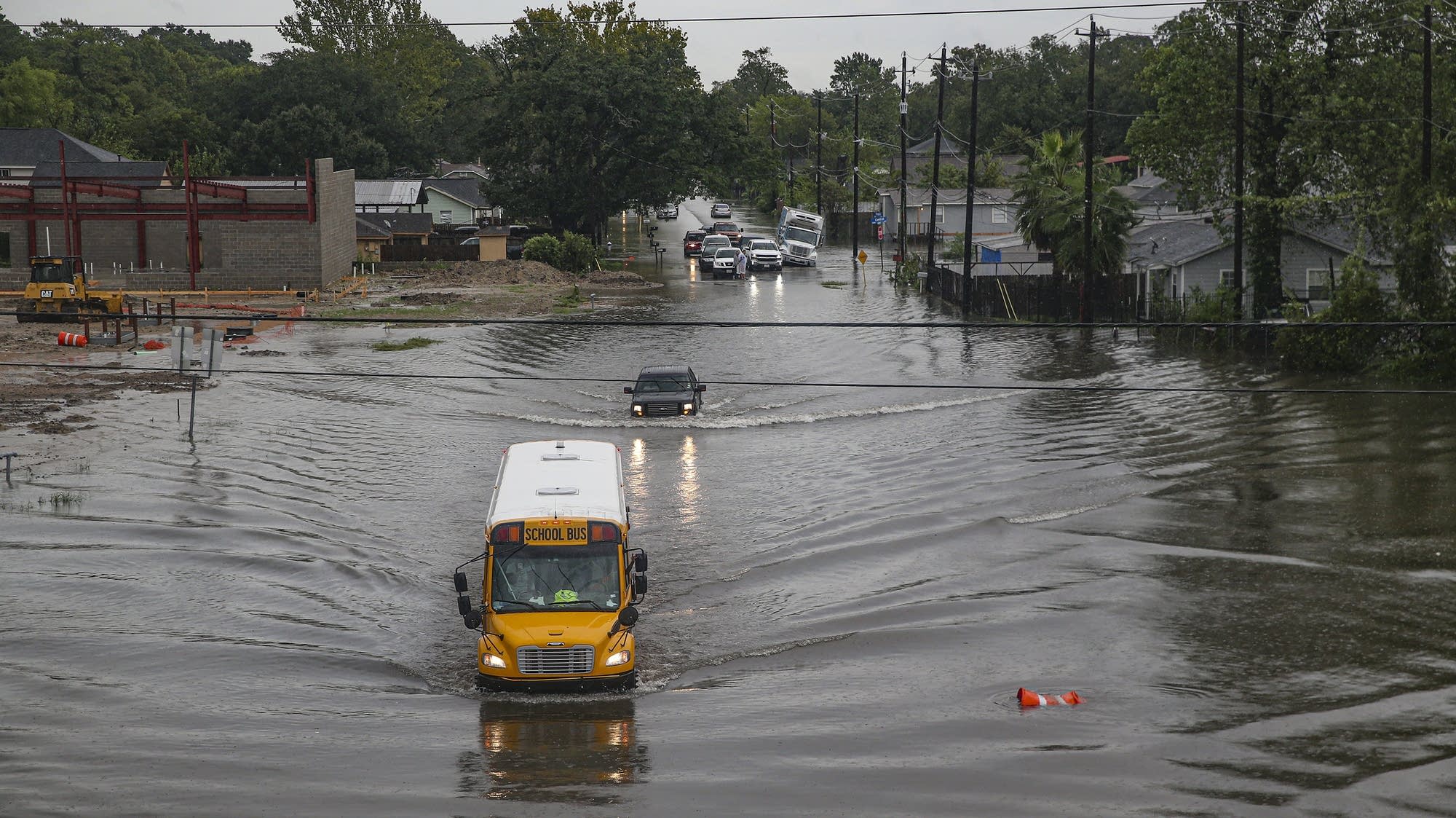When Amy Zachmeyer, 41, bought her midcentury, 2-bedroom Houston home for $185,000, it was a fixer upper — but she still felt good about the investment.
“It has been really important to me to own a home,” she said.
Her parents rented and moved around growing up. She spent most of middle and high school without her own room.
The Houston property was Zachmeyer’s first home, which she and her husband bought from her landlord in 2021.
The house she describes as “shabby chic” was supposed to bring her security. But when storms hit Houston a year ago, a tree limb fell through her ceiling, damaging the roof.
The quirks and costs of living in an older home that needed significant repairs began to wear on her, especially knowing that another hurricane season is on its way.
“The storm kind of came and just, I mean literally, this tree fell out of the sky and kind of crushed my dreams a little bit,” Zachmeyer said.
She’s in the position of many first-time home buyers in Houston who take advantage of the relatively affordable market, but who end up saddled with costly weather damage and other bills that can add significantly to the burden of homeownership.
First-time home buyer Julia Orduña bought a town home in Houston last year. Her mortgage payment is around $1,500 with roughly $800 extra for her homeowner’s association. She liked the idea of having help managing the property, which could help during a disaster.
“HOAs are not all roses and daisies, because we are dealing with a major subsidence issue on my side of the property,” she said.
The ground outside her patio is sinking, which is common in Houston.
“We just fixed half the roofs. That meant that everybody had to put $2,000 of our own money as a special assessment, out of the blue, to fix a roof that wasn’t mine,” Orduña said.
And Douglas Duckworth, another first-time home buyer, said even though his new house hasn’t flooded, he sprang for top tier flood and homeowners’ insurance.
“When I first purchased my home in 2022, I was paying $3,400 a year for homeowners’ insurance, and now I’m paying about $9,000 a year in homeowners’ insurance,” Duckworth said.
On top of that, he’s spent at least $26,000 disaster proofing his home, which included upgrades like a Generac home generator and instant sandbags.
“They absorb water, and then they expand,” he said. “You can basically create a barrier around your house.”
But Duckworth acknowledged that many don’t have the money to pay for disasters before they hit.
And a lot of people who are at a high risk of flooding don’t have flood insurance policies at all.
“With rising insurance costs and the cost of housing and higher interest rates… one of the first things that gets cut if it’s not required is flood insurance,” said Bill Baldwin, who has worked in Houston real estate for almost 30 years.
Only people in the 100-year flood plain are required by their mortgage lenders to buy flood insurance. And many potential home buyers rely on outdated maps to estimate if the house they want will flood.
“I do not personally believe just pointing someone to the FEMA flood map remotely indicates your level of risk,” Baldwin said. “There are statistically more claims outside of the 100-year flood plain than inside the 100-year flood plain.”
But people continue to buy homes that have flooded. Developers continue to pave over prairielands that helped mitigate flooding — and more people move to Houston.
It can seem pretty bleak, but homeownership is still homeownership.
Amy Zachmeyer, whose tree branch fell onto her roof, said even with the headaches of storm damage, she doesn’t regret buying the home – she has a stable place to live and an affordable mortgage.
“But I am stressed out,” she said. “I just wish that maybe some money would fall through the hole in our roof as well so that I could get it fixed.”

